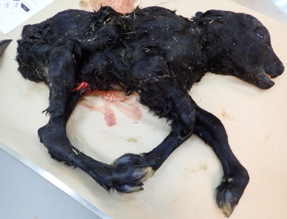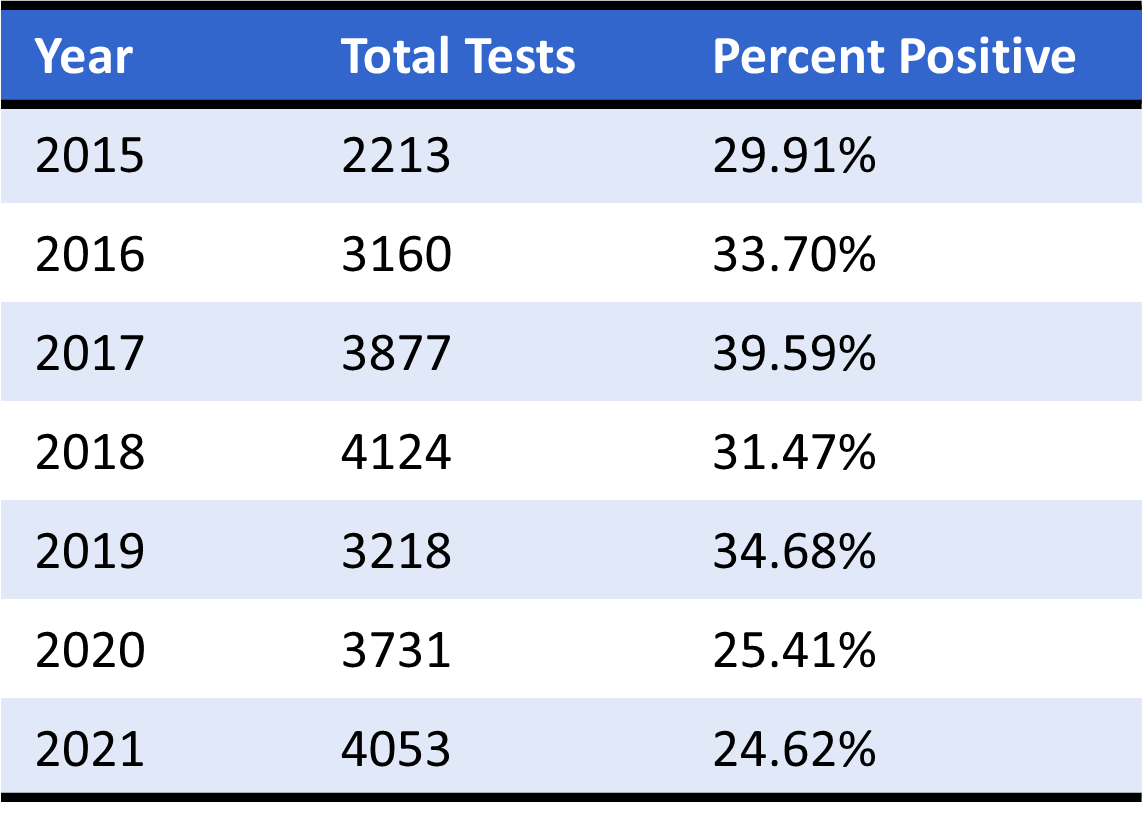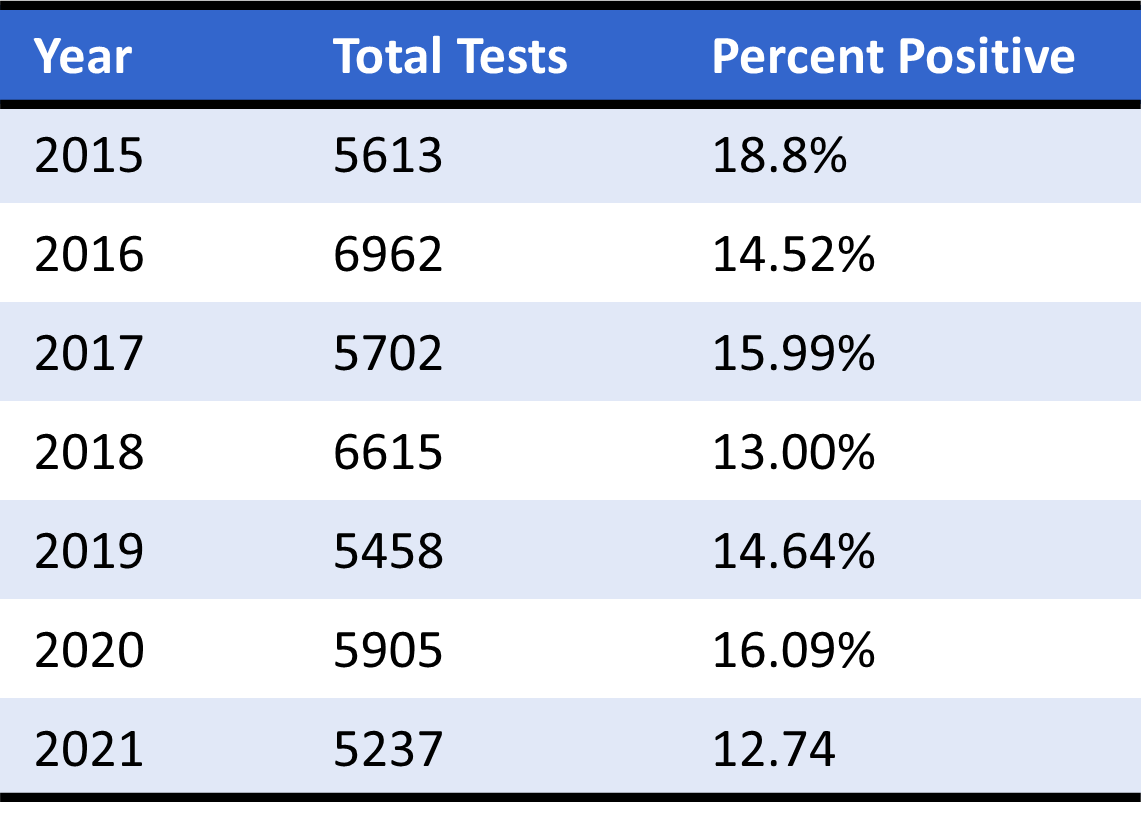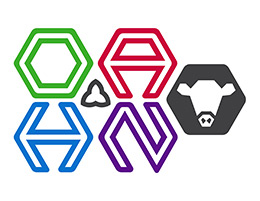OAHN Bovine Expert Network Quarterly Producer Report – Q1 2022
Ontario Animal Health Network (OAHN) Bovine Expert Network Quarterly Producer Report
Items of interest from recent bovine expert network meeting:
- Pneumonia outbreaks in new calves coming into feed yards
- A dairy herd experiencing abortions diagnosed as Campylobacter fetus, subsp fetus. Source has not been determined
- Dairy herds experiencing pneumonia outbreaks this spring. In most cases no diagnostics performed but assumed to be bacterial.
- A cow-calf herd with many calves born with skeletal defects. All virus testing pursued was negative.
Cattle Surveillance
There were 262 bovine pathology submissions in Q1, which spanned from February 1 to April 30, 2022.
Adult Cattle
In adult cattle the most common diagnoses at postmortem were pneumonia. There were multiple pathogens detected including Mannheimia hemolytica which has also been reported by practitioners managing outbreaks of respiratory disease in dairy herds. Other pertinent pathology findings included cases of septicemia, Clostridial myositis by Clostridial septicum which is typically occurs through contamination of wounds, and lymphoma consistent with bovine leukemia virus.
Youngstock (2 months to 2 years)
There were 52 submissions to the lab: 29 dairy, 21 beef, and 1 bison. Pneumonia and enteritis were most frequently identified. There was one case of sudden death in post-weaning dairy calves due to Yersinia pseudotuberculosis. This bacteria causes enteritis and septicemia, as well as abortion and neonatal deaths. It can be carried by asymptomatic animals and shed in feces. Other detections included polioencephalomalacia and listeriosis causing neurological disease, myopathy presumed to be due to white muscle disease, and spinal abscesses with vertebral osteomyelitis and fractures.
Young Calves (< 2 months)
Pneumonia and enteritis were the most common detections. Other gastrointestinal abnormalities included abomasitis with rumenitis, abomasal ulcer, intestinal accident and malformation causing atresia coli. There was 1 case of meningitis associated with Salmonella Dublin septicemia. More commonly, S. Dublin presents as respiratory disease and septicemia. Other causes of septicemia included other Salmonella spp and E. coli.
Abortion
There were 26 submissions this quarter: 18 abortions, 3 premature birth, 1 stillbirth, and 4 full term periparturient neonatal death. There were 12 cases where no specific pathogen was detected. Bacterial abortion was diagnosed in 6 cases. Other causes included dystocia (2), infectious bovine rhinotracheitis (1), Neospora (1) and Ureaplasma (1). There was 1 cases of malformation (see photo).

Salmonella
Salmonella spp were isolated from 11 submission representing an estimated 8 premises. S. Dublin was detected in 7 submissions (5 premises).
Bovine Viral Diarrhea Virus
There were 2 positive tests out of 238 test results. Both detections were part of herd screening.
Outbreaks of Mannheimia hemolytica in Lactating Cows
The OAHN bovine network is periodically made aware of outbreaks of bacterial pneumonia in lactating dairy cows. The network members first became aware in early 2020 when several severe outbreaks were reported, and a survey of Ontario practitioners was conducted. At that time 19 practitioners reported having managed outbreaks in the previous 3 months with a range of morbidity (5-60%) and mortality (0-20%). Although not always directly reported to the network, veterinary discussion boards, social media posts, and summaries from other provincial surveillance networks indicate that periodic outbreaks continue to occur and not just in Ontario. Where diagnostics are performed, Mannheimia hemolytica has been frequently identified. One recent outbreak in Ontario reported 25% mortality.
Anecdotally, accounts from practitioners that have managed affected herds suggests best outcomes have been achieved when producers promptly got their veterinarian involved to determine the cause, and at-risk cows were screened daily for early detection of illness. Producers should discuss the appropriateness of vaccination for prevention with their herd veterinarian.
Bovine Leukemia Virus Testing in Ontario Laboratories
The OAHN bovine network recently released a podcast with Dr. Ron Erskine on bovine leukemia virus and the management strategies veterinarians and producers can employ to control the disease. A follow up question that came up after the podcast was “How much testing for BLV is currently happening in Ontario? The OAHN bovine network pulled the numbers to find out.
BLV testing occurs in two Ontario laboratories: the Animal Health Laboratory (Guelph) and at Lactanet (Guelph). Both labs use an ELISA test to detect antibodies to the virus in either serum (AHL) or milk (Lactanet). The ELISA test is reported to have very high sensitivity and specificity and animals that develop antibodies are considered infected for life.
As seen in Tables 1 and 2, the percent positive varies between laboratories. Although unable to be confirmed, network members hypothesize that the tests may at times be used for different purposes. For example, herd control programs where positive animals are frequent versus verifying animals are negative for sale, export, or entry into AI facilities, etc. There may be scenarios where milk or blood is the more convenient sample to submit for testing as well.
The antibody ELISA for bovine leukemia virus, whether on milk or serum has a high level of accuracy (after 6-12 months of age). False negatives can occur immediately after infection until antibodies have developed. Recent work from Michigan State University shows BLV positive cows can also be screened for elevated lymphocyte counts to prioritize culling. Animals with persistent lymphocytosis are more likely to be infectious to other animals and have more serious production declines. To listen to the BLV podcast and find out more about this strategy, check out https://oahn.podbean.com/


Thank you to Tanya Rossi and David Kelton for their time extracting data for this article and to the Animal Health Laboratory and Lactanet for sharing testing results for the benefit of veterinarians and producers.


